“A one-woman imperial gesture…” In Profile: Maria Kulikovska
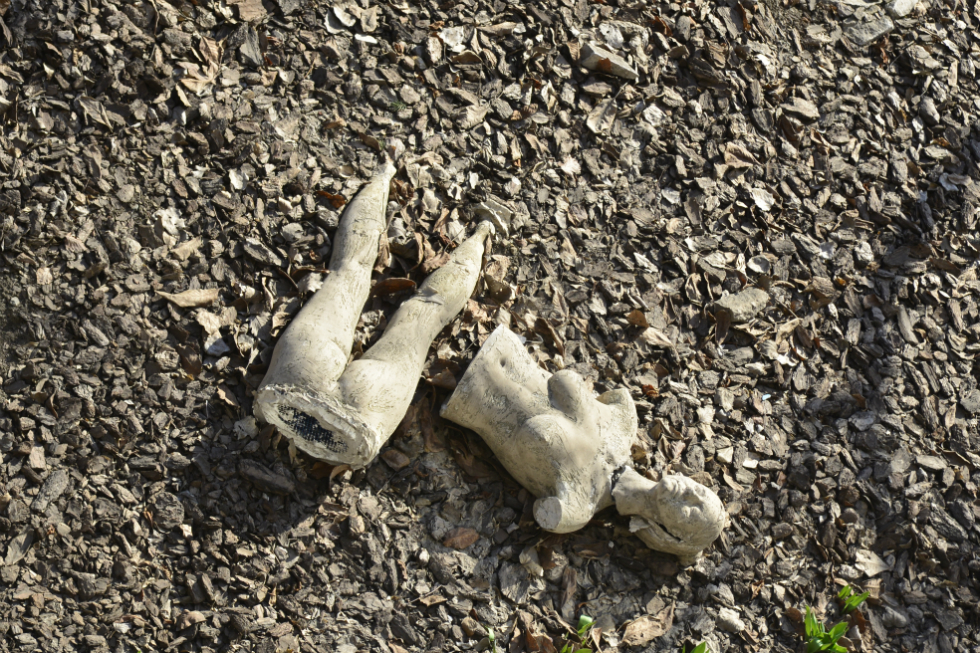
How would you feel if soldiers used your sculptures as target practice, during an occupation of your home country? Tom Emery meets Ukrainian artist Maria Kulikovska during a residency in Liverpool, and finds out more about her politically charged, exquisitely made work…
A new city, several weeks, and an open brief: a combination like this can be a daunting, intimidating thing. This initially proved to be the case for Maria Kulikovska, one of the Ukrainian artists selected for the British Council in Ukraine and Liverpool Biennial’s SWAP: UK/Ukraine Artist Residency Programme. Describing herself as a “hard-working person”, the loose structure of the residency, without a specific end goal, proved frustrating at the start of her time in Liverpool, as she searched for something to work towards without overt external guidance providing her with a framework to operate within.
However, once adjusted to, this freedom allowed for what has ultimately been a creatively fulfilling experience, with Kulikovska ending the residency period with a specific goal in mind: a new public sculpture made in response to Antony Gormley’s Another Place (2005), the 100 iron men cast from Gormley’s own body who now permanently reside on Crosby Beach, Merseyside.
Gormley has become perhaps the ultimate acceptable face of art, particularly public art, in the UK. Alongside Another Place, he has cemented this status with what must be the most famous sculpture in Britain, Angel of the North (1998); and 20 years later, the enduring popularity of these works allow Gormley the rarest of statuses for living artists – his work is known and genuinely liked by the public-at-large. Whatever controversy Gormley once caused has long since died down, and his work has achieved a kind of neutrality, its existence is accepted and unchallenged. It’s no surprise that this acceptance has been achieved by a well-educated, white man in his 60s making work concerning the male figure, the long accepted focus for public monuments. Gormley has become neutral, even banal.
Not so for Kulikovska.
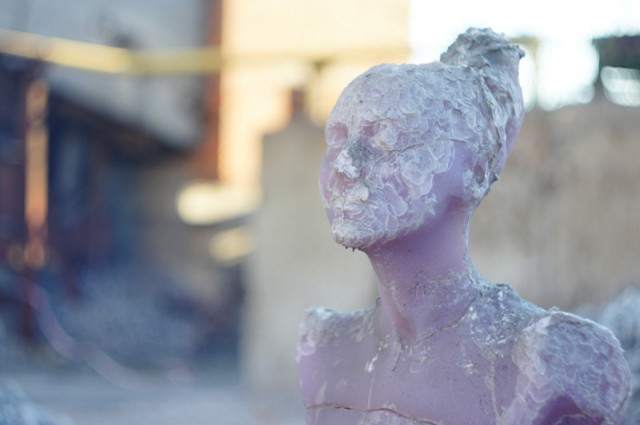
Similarly to Gormley, Kulikovska often creates sculptures from casts of her own body, such as Army of Clones (2010) or Homo Bulla (2012). However, while Gormley’s male figure is accepted as an apolitical everyman, the same cannot be said for Kulikovska. The female body has politics enforced on it throughout contemporary society, whether through restrictive reproductive rights, oppressive standards of beauty applied throughout the media, or the harassment and everyday sexism that is part of many women’s lives. Simply existing as a woman is a political act. Kulikovska’s repeated presentation of her own nude figure is, then, a significant act, as it carries burdens that the male figure does not.
This was ultimately illustrated on 9 June 2014, when the pro-Russian, so-called Donetsk People’s Republic forces seized Izolyatsia, a cultural centre in Donetsk, Ukraine, as part of their occupation of the Donetsk Oblast (province) within the wider context of the 2014 annexation of Crimea by Russia. Sculptures from Kulikovska’s Army of Clones and Homo Bulla series were being exhibited by Izolyatsia at the time. The Homo Bulla series, made from soap, were placed at external sites and designed to gradually decay in the changing weather conditions, producing an accelerated replication of the human body’s aging process, ending of course, in death. However, these works were given a quicker death than Kulikovska intended, with DPR forces destroying the sculptures by shooting them; the human-scale of the works unintentionally proving ideal for target practice.
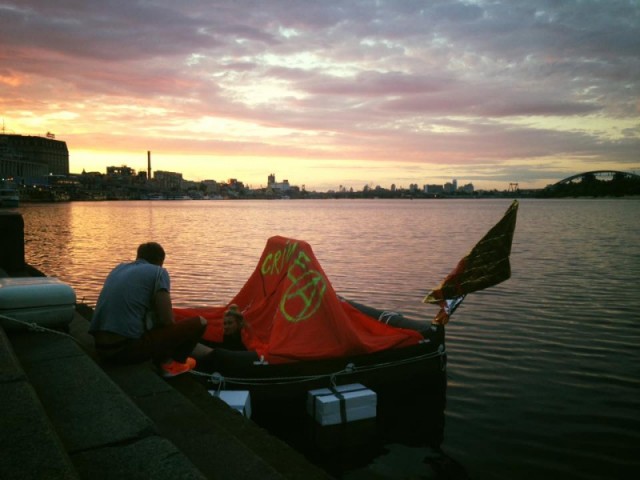
The ongoing occupation of Crimea has made Kulikovska into a displaced person, as although she has lived away from her hometown for some years now, said hometown, Kerch, is part of the occupied territory, giving her nowhere to return to. Demonstrating their perceived ownership over the region, the Russian government is currently continuing construction of a bridge between Kerch and the Russian peninsula of Taman. Following the annexation of Crimea, the Ukrainian government pulled out of the initially collaborative project, while its continuing construction now acts as an illustration of Russia’s imperialistic desires, making physical connection with Crimea as if to better absorb it. As such, Kulikovska continues to be Ukrainian, but, for now at least, her hometown does not – according to its occupiers.
This displacement is addressed directly with Kulikovska’s The Raft CrimeA (2016), where for one week she inhabited a small inflatable raft emblazoned with the word “Crimea”, moored at the Kyiv Quay on the Dnipro River, before setting sail towards EU territory. During this time, Kulikovska relied on donations of food and other provisions from local residents, while also inviting other displaced persons to join her on the raft. The project highlights the surprising precariousness of citizenship, articulated in the words of the project’s curator Lesia Kulchinska: “The whole population of Crimea migrated from one state to another during one night without making a step.” UK residents might find some unexpected common ground here, as although we are thankfully free of local military action, the disastrous Brexit process will ultimately deprive us of our EU citizenship, against the wishes of almost half of the voting population.
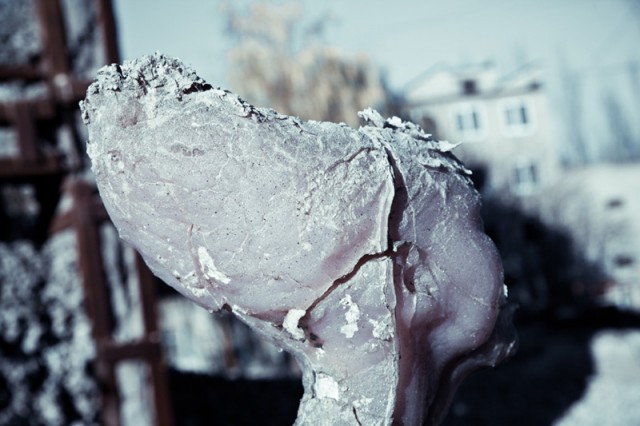
In the context of this precariousness, Kulikovska found herself in Liverpool and made the natural connection with Gormley. Gormley’s work presumes the right to permanence, and regardless of the merits of Gormley’s work, he has inserted himself into the landscape one hundred times, assuming – via the white-male societal position of being the default – that this gesture will resonate with the wider public (which in his defence, it certainly has done, and continues to do). Kulikovska’s proposed response plays on their shared sculptural actions – creating casts of their own bodies – as well as their differences, such as gender and societal status.
This proposed new work would be sited at New Brighton, and would consist of a column of soap, which over time would gradually degrade to reveal a life-size resin cast of Kulikovska’s naked body. Across the River Mersey from Crosby, Kulikovska’s sculpture would stand and face Gormley’s iron men, opening a conversation between the pieces, with Kulikovska’s more anatomically rendered nude figure standing alone and vulnerable, yet defiant, in the face of Gormley’s featureless legion of everymen.
Although a regularly used material for Kulikovska, the use of soap here would connect the piece to the local history of the area, particularly as she proposes to use Unilever brand soap. This ties the piece to the nearby Port Sunlight, built in the late 19th century by Lever Brothers – who would merge with Margarine Unie to form Unilever – to house workers in their soap factory. The gradual decaying of the soap reflects on cycles of life and death, but also specifically to the decline of industrial manufacturing in areas such as this. While urban centres such as Manchester and Liverpool have rebuilt and redefined themselves in the post-industrial era, smaller towns such as New Brighton continue to face hardship, and a less certain return to prosperity.
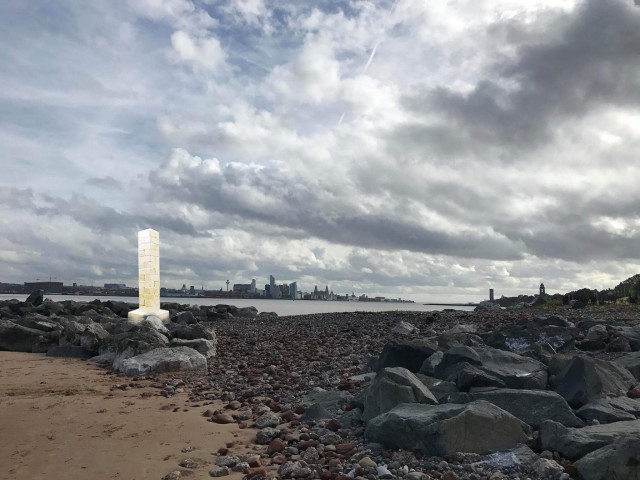
The final, key piece of context for Kulikovska’s proposal is that the sculpture be installed without permission. It is yet to be seen whether this is a practical path to follow, particularly if pursuing institutional support, but importantly, it allows Kulikovska to become the occupying force. This would function as a one-woman imperial gesture, permanently installing herself in the landscape of New Brighton, occupying this territory as pro-Russian forces continue to occupy her hometown in Ukraine.
Appropriately, the future of this piece is precarious.
Tom Emery
Tom interviewed Maria Kulikovska in Liverpool and Manchester during SWAP: UK/Ukraine Artist Residency Programme, October 2017. This piece was commissioned by Liverpool Biennial
See more on Maria’s website
All images courtesy the artist





